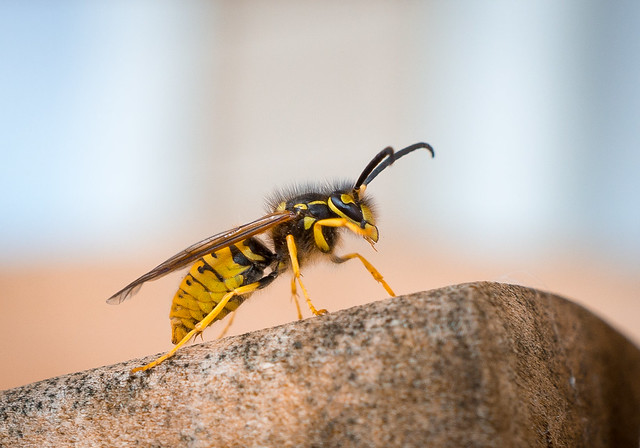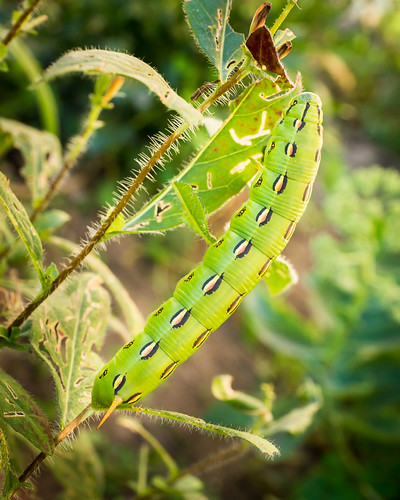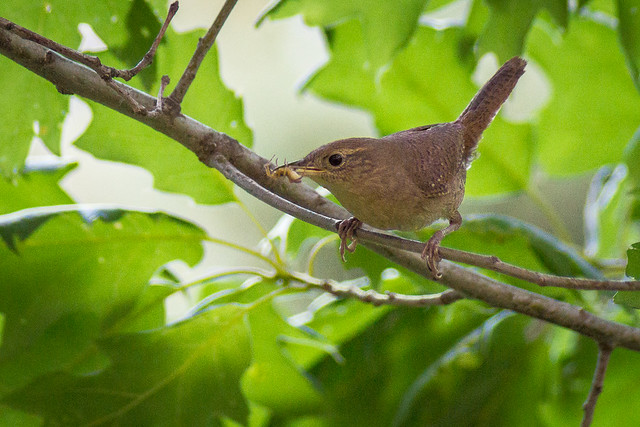Bug
Dead Leaf Butterfly

Look closely or you’ll miss it. At first glance, this appears to be a leaf but, wait…it has legs and antennae! This is the cleverly disguised Dead Leaf Butterfly (Kallima inachus), sometimes called Orange Oakleaf.
When its wings are closed, it looks like a dried leaf. This incredibly effective, natural camouflage helps it avoid predators. When open, its wings are predominately a bluish-black with striking orange markings. In my next post, I’ll give you a view of this same butterfly with it’s wings open.
This cool creature is a nymphalid butterfly found in tropical Asia from India to Japan.
You can get a better view of the detail in this wing by looking at the larger version; available by clicking on the photo.
All of the photos I post are available for purchase. If you’d like to buy one, click on the blue “Buy this Online” bar below for a variety of print and frame options or contact me for digital purchase and licensing options.
Orange Adorned Butterfly
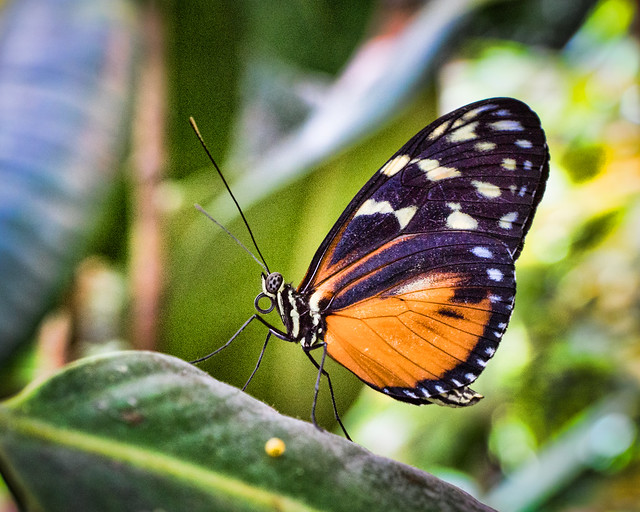
This little beauty was content to pose for a photo or two. I don’t know what kind of butterfly it is. It was one of hundreds we walked among at the Butterfly Palace in Branson, MO. I was able to snap several other unique butterflies there and will share them in the days and weeks to come. Stay tuned.
To view a larger version of this image, click in it and a new browser window will open.
All of the photos I post are available for purchase. If you’d like to buy one, click on the blue “Buy this Online” bar below for a variety of print and frame options or contact me for digital purchase and licensing options.
Alien Presence
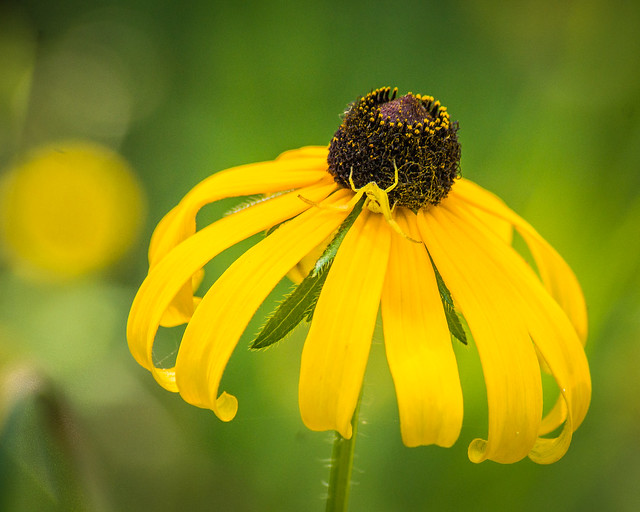
Doing its best to blend in with the simple beauty of this wildflower, a stealthy crab spider awaits an unsuspecting victim.
I love watching the viewers reaction to shots like this. At first you see the beauty of the flower. An instant later, your brain registers the spider. How did you respond?
To get a better view of the spider and other details in this image, click on it and a larger version will open in a new browser tab.
Look of Defiance
Thick as Thieves
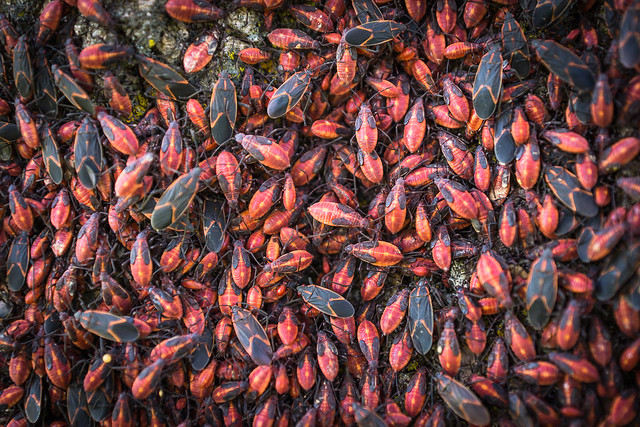
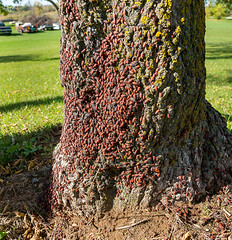 This seems to be an early autumn convention of Boxelder bugs. They’ve congregated at the bottom of a tree.
This seems to be an early autumn convention of Boxelder bugs. They’ve congregated at the bottom of a tree.
When it begins to cool down in Wisconsin, these bugs may form large aggregations while sunning themselves in areas near their host plant – usually maple or ash trees. I’ve also seen them gather in other odd places…the corner of a building, around a door way, etc.
They are harmless to humans but considered nuisance pests. When the temperatures begin to cool in the fall, they sometimes invade houses and other man-made structures seeking warmth or a place to overwinter.
People often mistaken them with insects known as Stink Bugs – a different species. However, boxelder bugs will release a pungent and bad-tasting compound upon being disturbed to discourage predation; this allows them to form conspicuous gatherings without being preyed on.
To get a better view, click on the top photo and a larger image will open in a new browser tab.
Chicory Bee
Right at Home
Wild and Woolly
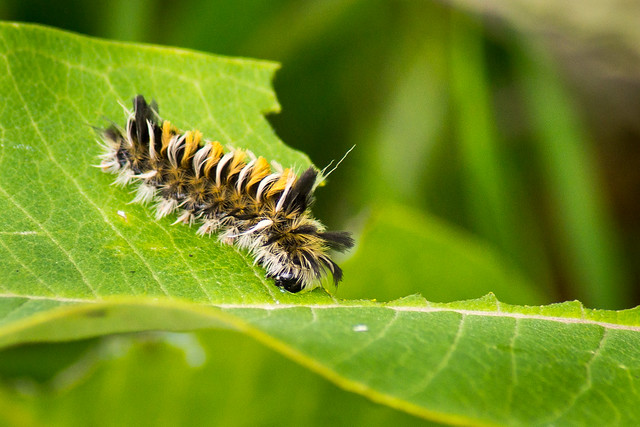
This is one hungry, little dust-mop! Look at how much of that leaf it’s already consumed. It is a Milkweed Tussock Caterpillar.
When I took this picture, I didn’t notice the interesting, synchronized curl to those orange and white tufts of hair. It just looked like your run-of-the-mill fuzzy caterpillar. Enlarging the image, often reveals surprising aspects of the insect world.
By the way, the head is that shiny black part on the edge of the leaf, mostly covered by hair. (He needs to trim his bangs.)
This was actually in a very difficult spot to photograph due to other vegetation being in the way. To try and get a better shot, I slowly, gently bent the leaf he was on. They must not have sticky feet because, at the slightest angel, it immediately slid off the leaf and into the dense weeds below…never to be seen again.
To really see the detail of this creature, click on the photo and a larger version will open in a new browser tab.
Hummingbird Moth Caterpillar
This monster caterpillar was found decimating the primrose patch in our flowerbed. It is a Hummingbird Moth Caterpillar.
This bad boy, complete with dangerious looking spike on his tail, was about 4-inches long.
It took a bit of research online by my wife, Sara, to identify this particular species. The hummingbird moth is a large moth that is often mistaken for hummingbirds because they are about the same size and flit from flower to flower like hummingbirds.
To view a larger version of this image, click on the photo.



















































